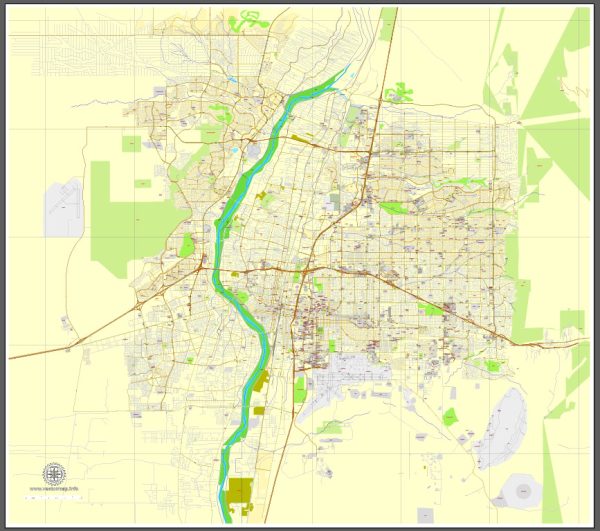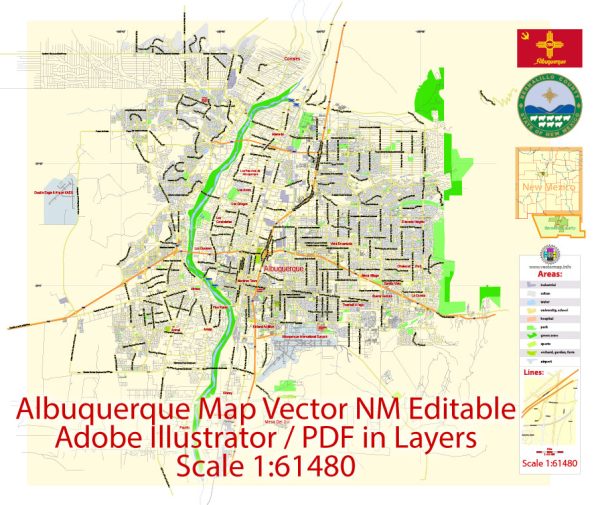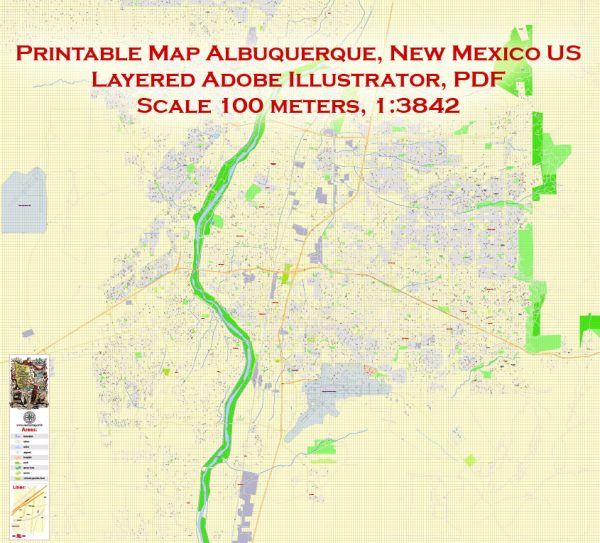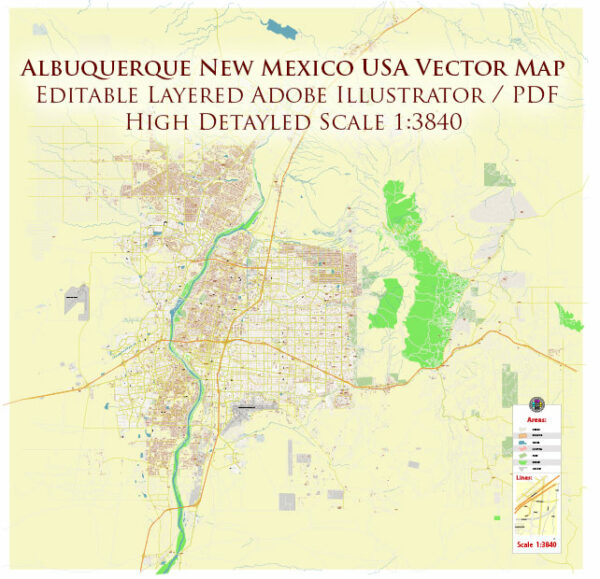A general overview of the economic history of Albuquerque, New Mexico.
Vectormap.Net provide you with the most accurate and up-to-date vector maps in Adobe Illustrator, PDF and other formats, designed for editing and printing. Please read the vector map descriptions carefully.
Albuquerque’s economic history is diverse and has undergone several phases of growth and transformation. The city’s economy has been influenced by factors such as its geographic location, historical events, and economic trends.
- Early Economy and Spanish Influence (1706-1821):
- Albuquerque was founded in 1706 as a Spanish colonial outpost, and its early economy was centered around agriculture and trade.
- The city played a crucial role as a trading post along the El Camino Real, connecting Mexico City to San Juan Pueblo and Santa Fe.
- Mexican Period (1821-1846):
- After Mexico gained independence from Spain in 1821, Albuquerque continued to be a vital trade hub in the region.
- American Territorial Period (1846-1912):
- The arrival of the railroad in 1880 significantly impacted Albuquerque’s economy, turning it into a transportation and distribution center.
- The city’s economy grew with increased trade and commerce, and it became a key stop along the Atchison, Topeka, and Santa Fe Railway.
- 20th Century Growth and Diversification:
- The mid-20th century saw the establishment of Kirtland Air Force Base in 1939, contributing to the city’s economic stability and growth.
- Post-World War II, Albuquerque experienced population growth and economic diversification, with the development of the technology and aerospace industries.
- High-Tech and Aerospace Boom (1940s-1980s):
- The city became a hub for research and development, particularly in the fields of nuclear technology and aerospace.
- Sandia National Laboratories, established in the 1940s, played a key role in nuclear weapons research.
- The 1980s saw an expansion of the technology sector, with the establishment of companies in the semiconductor and high-tech industries.
- Modern Economy (1990s-2022):
- Albuquerque continued to diversify its economy in the late 20th and early 21st centuries, with growth in healthcare, education, and tourism.
- The city became a center for film and television production, and the tourism sector benefited from the region’s natural attractions, including the Sandia Mountains.
- Challenges and Opportunities:
- Like many cities, Albuquerque faced economic challenges, including issues related to poverty, crime, and education.
- Efforts were made to revitalize the downtown area and attract new businesses and investments.
It’s important to note that economic conditions are subject to change, and Albuquerque’s economic history may have seen further developments. For the latest and most accurate information, I recommend checking more recent sources or economic reports specific to Albuquerque.





 Author: Kirill Shrayber, Ph.D.
Author: Kirill Shrayber, Ph.D.